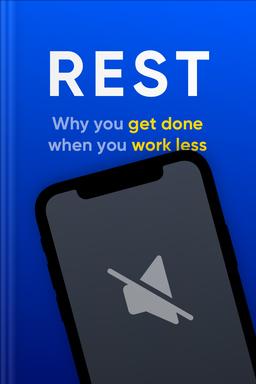You’ll learn
- About the Wallas model of creativity
- How sport makes us smarter
- What happens while we sleep
- Why we need to take a walk after reading
russia has launched a full-scale war in Ukraine. Donate to support Ukraine and protect the world’s peace.

first KEY POINT
We all grow up in a labor cult. A working person arouses our respect, while a resting one seems lazy. Rest in the mass consciousness is associated with idleness, a waste of time, and something optional. It's time to rethink this idea.
We must allocate the same priority to rest and toil in our schedule. It is crucial to switch from solving work issues to other activities: it releases the creative energy that brings out the best ideas.Conscious rest is essential to efficiency because there can only be focused work with timely breaks. Continuous work threatens us with distracted attention, deterioration in well-being, and decreased productivity. In the long run, this can lead to burnout and depression. That's why we should never spend weekends at the office, and we should also avoid overtime. Having pleasant and valuable evening plans is the best prevention for not staying at work longer than required.Rest can be beneficial if deliberate: for example, a walk in the fresh air, exercise, or a nap. Such a pastime restores strength, increases concentration, and allows you to remain interested in the subject of your work for a long time.We need a balanced routine with limited hours of highly concentrated work and mandatory intended breaks to feel happy and prosper. If you want to find harmony between work and leisure, this summary is for you.
second KEY POINT
Sticking to a stable routine is a guarantee of productivity. Consistent work hours help us focus better and keep a rhythm. Just as a regular bedtime enables us to sleep better, a day regime causes us to “habituate” ourselves. A habit enhances our creativity and forms the landing space for our muse. This way, we can concentrate on our most demanding work and assemble the conditions that will foster inspiration.Routines are effective because they don’t tap into our willpower, resilience, or intrinsic motivation. The day's optimal regime saves us power and enables fast action. Habits protect the time we set aside for rest because, without time out, we cannot be creative. Still, if we are resourceful with our routines, we can relax afterward.The early morning hours are most productive because of “inhibition.” Inhibition is our ability to stay focused on a job task at hand and suppress task-irrelevant thoughts. It is highest when we feel most alert and active ― during our morning hours, and lowest when we are energy-starved and need a nap ― our afternoons. Such a regime of the day ― an early start and a strict work plan ― allows room for rest and other activities.

Continue reading with Headway app
Continue readingfirst KEY POINT
second KEY POINT
third KEY POINT
fourth KEY POINT
fifth KEY POINT